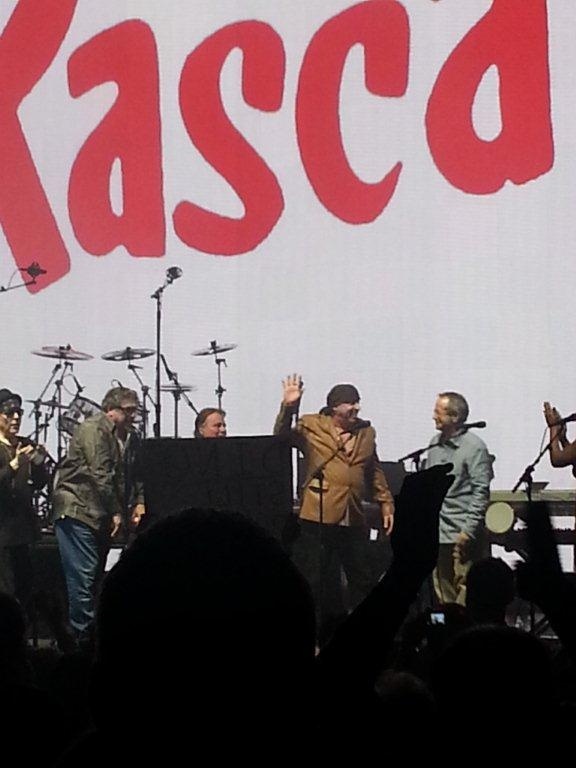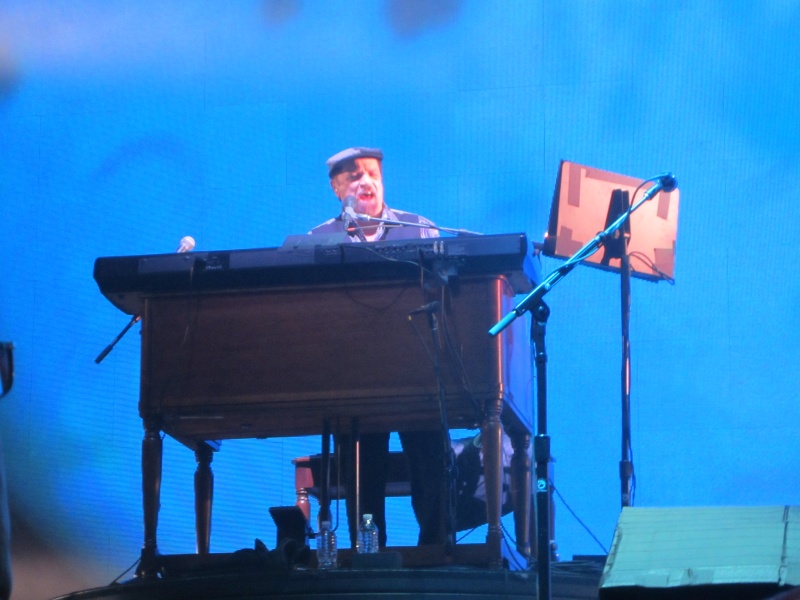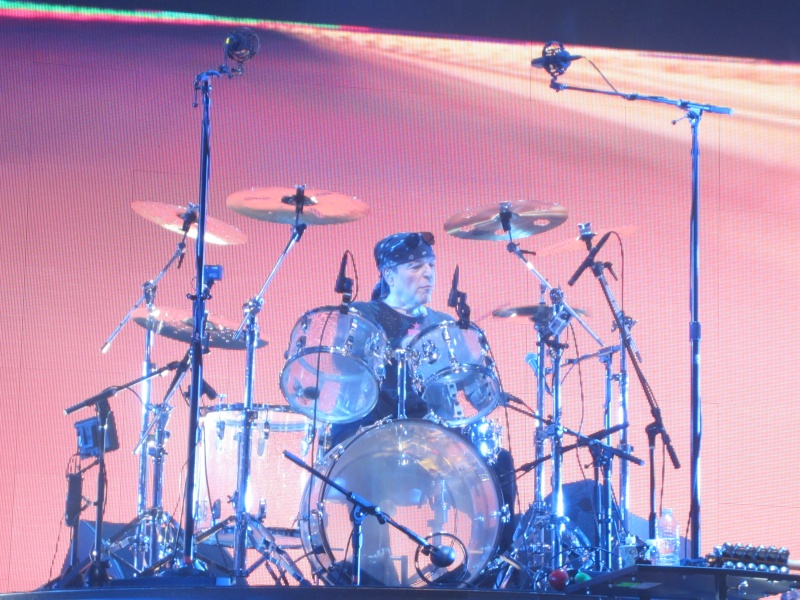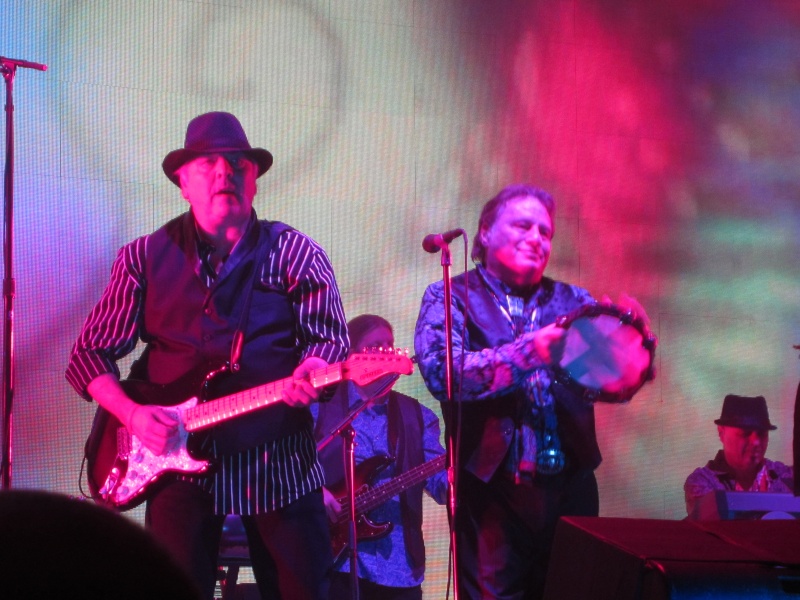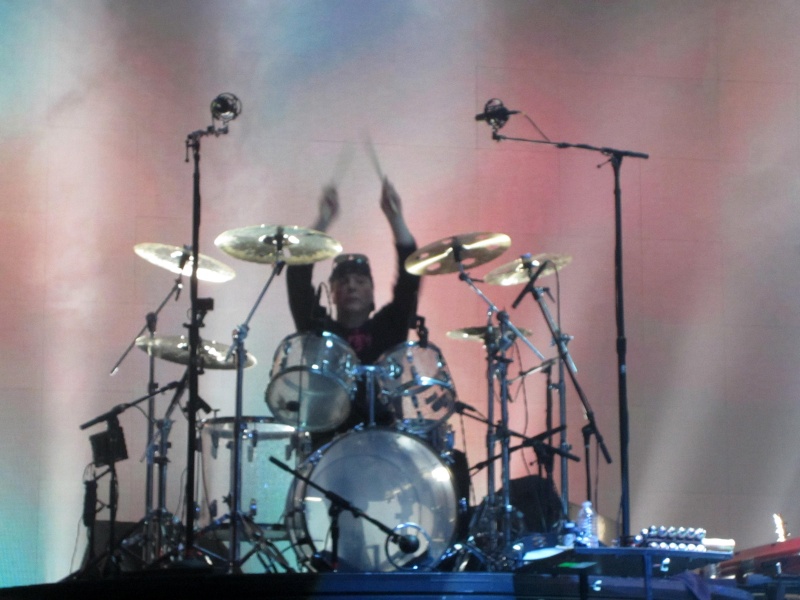Well, my Rascals reunited to play some shows about 10 mins. from my house as I had said in an earlier post. I've gone the past two nights and am going again tonite plus once next week when I'm also doing a meet and greet with the band. These guys were the first major influence on my musical taste and Dino Danelli the first of many drum idols. The show was exceptional . They played over two hours . The multi-media was very well done. They played all their hits and also a lot of great B- sides and tunes which graced their wonderful albums. In short, they delivered - Big Time . But that's not just my opinion. I"m attaching the review from the NY Times which does not give out praise lightly. Supposedly they will be doing a show in Florida on memorial day weekend later this year, but who knows if there may even be more. Woofus are you listening ? I will post some photos next weekend after the meet and greet.
Part Biography, Part Concert: a ’60s Band Reunites
The Rascals at the Capitol Theater
Chad Batka for The New York Times
The Rascals performing "Once Upon a Dream" at the Capitol Theater in Port Chester, N.Y., Thursday night.
By JON PARELES
Published: December 14, 2012
PORT CHESTER, N.Y. — For their first public shows in 40 years, the reunited Rascals have returned with an extravaganza: “Once Upon a Dream,” which opened on Thursday night at the Capitol Theater here. It’s described as a BioConcert — “bio” as in biography — by its writer, co-director and co-producer Steven Van Zandt, the garage-rock-loving guitarist of the E Street Band. Like “Beatlemania” if it had had the actual Beatles onstage, “Once Upon a Dream” fondly traces the band’s story with the 1960s very much in view.
A big video screen presents band members’ good-humored (and slightly scripted) reminiscences, and re-enactments with young actors, when it’s not pulsating with light-show splashes, Op-art explosions or archival ’60s moments as the Rascals play. The original four-man band is still alive and stomping.
The Rascals got their start like countless mid-’60s bands, socking out their own versions of current soul hits, but they happened to be considerably better musicians and singers than most. The singer and keyboardist Felix Cavaliere, who came out of classical music and doo-wop; the drummer Dino Danelli, who had played jazz and R&B; and the guitarist Gene Cornish, who was rooted in rockabilly, got together backing Joey Dee, of “Peppermint Twist” fame. They set out as the Young Rascals with the singer Eddie Brigati in 1964, and from 1966 to 1968 they were regularly in the Top 10.
Their music changed rapidly, from garage-soul cover versions — like “Good Lovin’ ” in 1966 — to their own more reflective, jazz-tinged songs, like “Groovin’ ” in 1967 (when the Young Rascals became the Rascals), and to utopian ’60s proclamations like “People Got to Be Free,” in 1968, written after the assassinations of Robert F. Kennedy and the Rev. Dr. Martin Luther King Jr. The Rascals’ songs, largely written by Mr. Cavaliere and Mr. Brigati, were resolutely positive, praising love and freedom without some of the era’s angry undercurrents.
The departures of Mr. Brigati and then Mr. Cornish ended the original lineup by 1972, though Mr. Cavaliere continued to lead his own Rascals a little longer. (The original lineup played together at its 1997 Rock and Roll Hall of Fame induction and for a private 2010 performance organized by Mr. Van Zandt and his wife, Maureen.)
“Once Upon a Dream” tells the happy part of the story, with nuggets like turning down the chance to be produced by Phil Spector, and being skeptical about spoken words in pop songs — long before hip-hop — when recording “I Ain’t Gonna Eat Out My Heart Anymore,” which had spoken verses, in 1964.
But the narrative sensibly makes way for the music, and while the band is augmented by a few backup singers and musicians, the Rascals don’t hide behind them. Mr. Cornish’s guitar retains its garage-rock aggression, though he also tossed off jazzy chords and, in “Sueño,” flamenco lines. Mr. Danelli’s beats sound heftier through modern equipment, and Mr. Cavaliere’s voice is still exultant. Mr. Brigati had to strain at times, but even then, the songs carried him toward standing ovations.
The show doesn’t dwell on why the Rascals fractured for 40 years; it leaves the on-screen actors to mention drugs, lawsuits and unhelpful management. “Once Upon a Dream” is ’60s nostalgia with a wistful smile and the Rascals’ perpetually upbeat messages. Its finale is “See,” the title song from a 1969 Rascals album, with a big soul backbeat and a twangy guitar riff as the band sings, “Things ain’t like they used to be/Love’s the only thing I see !
[img] [/img]
[/img]
Peace, TED
Part Biography, Part Concert: a ’60s Band Reunites
The Rascals at the Capitol Theater
Chad Batka for The New York Times
The Rascals performing "Once Upon a Dream" at the Capitol Theater in Port Chester, N.Y., Thursday night.
By JON PARELES
Published: December 14, 2012
PORT CHESTER, N.Y. — For their first public shows in 40 years, the reunited Rascals have returned with an extravaganza: “Once Upon a Dream,” which opened on Thursday night at the Capitol Theater here. It’s described as a BioConcert — “bio” as in biography — by its writer, co-director and co-producer Steven Van Zandt, the garage-rock-loving guitarist of the E Street Band. Like “Beatlemania” if it had had the actual Beatles onstage, “Once Upon a Dream” fondly traces the band’s story with the 1960s very much in view.
A big video screen presents band members’ good-humored (and slightly scripted) reminiscences, and re-enactments with young actors, when it’s not pulsating with light-show splashes, Op-art explosions or archival ’60s moments as the Rascals play. The original four-man band is still alive and stomping.
The Rascals got their start like countless mid-’60s bands, socking out their own versions of current soul hits, but they happened to be considerably better musicians and singers than most. The singer and keyboardist Felix Cavaliere, who came out of classical music and doo-wop; the drummer Dino Danelli, who had played jazz and R&B; and the guitarist Gene Cornish, who was rooted in rockabilly, got together backing Joey Dee, of “Peppermint Twist” fame. They set out as the Young Rascals with the singer Eddie Brigati in 1964, and from 1966 to 1968 they were regularly in the Top 10.
Their music changed rapidly, from garage-soul cover versions — like “Good Lovin’ ” in 1966 — to their own more reflective, jazz-tinged songs, like “Groovin’ ” in 1967 (when the Young Rascals became the Rascals), and to utopian ’60s proclamations like “People Got to Be Free,” in 1968, written after the assassinations of Robert F. Kennedy and the Rev. Dr. Martin Luther King Jr. The Rascals’ songs, largely written by Mr. Cavaliere and Mr. Brigati, were resolutely positive, praising love and freedom without some of the era’s angry undercurrents.
The departures of Mr. Brigati and then Mr. Cornish ended the original lineup by 1972, though Mr. Cavaliere continued to lead his own Rascals a little longer. (The original lineup played together at its 1997 Rock and Roll Hall of Fame induction and for a private 2010 performance organized by Mr. Van Zandt and his wife, Maureen.)
“Once Upon a Dream” tells the happy part of the story, with nuggets like turning down the chance to be produced by Phil Spector, and being skeptical about spoken words in pop songs — long before hip-hop — when recording “I Ain’t Gonna Eat Out My Heart Anymore,” which had spoken verses, in 1964.
But the narrative sensibly makes way for the music, and while the band is augmented by a few backup singers and musicians, the Rascals don’t hide behind them. Mr. Cornish’s guitar retains its garage-rock aggression, though he also tossed off jazzy chords and, in “Sueño,” flamenco lines. Mr. Danelli’s beats sound heftier through modern equipment, and Mr. Cavaliere’s voice is still exultant. Mr. Brigati had to strain at times, but even then, the songs carried him toward standing ovations.
The show doesn’t dwell on why the Rascals fractured for 40 years; it leaves the on-screen actors to mention drugs, lawsuits and unhelpful management. “Once Upon a Dream” is ’60s nostalgia with a wistful smile and the Rascals’ perpetually upbeat messages. Its finale is “See,” the title song from a 1969 Rascals album, with a big soul backbeat and a twangy guitar riff as the band sings, “Things ain’t like they used to be/Love’s the only thing I see !
[img]
 [/img]
[/img]Peace, TED

 Home
Home

